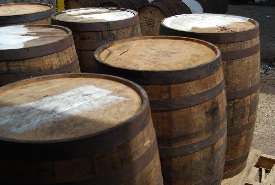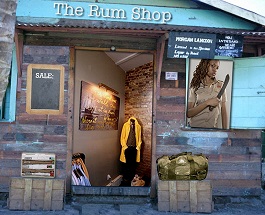The Best Dominican Rum
 The rum you will find in the Dominican Republic is considered the best quality rum in the world. It is highly prized by many, so a bottle of Dominican rum makes an excellent gift to take home. You'll also find the price of Dominican rum to be better than what you'd find in many other places, especially given its excellent quality. Of course the most popular Dominican cocktail is the Cuba Libre, which is rum mixed with coke and twist of fresh lime. Others prefer mixing it with fresh fruit juice or drinking it straight up. You may want to tour a rum factory, where you can sample various types of rum and buy only your favorites. If you are more into beer than rum, you may want to consider taking home some a nice lager called Presidente, the national Dominican beer.
The rum you will find in the Dominican Republic is considered the best quality rum in the world. It is highly prized by many, so a bottle of Dominican rum makes an excellent gift to take home. You'll also find the price of Dominican rum to be better than what you'd find in many other places, especially given its excellent quality. Of course the most popular Dominican cocktail is the Cuba Libre, which is rum mixed with coke and twist of fresh lime. Others prefer mixing it with fresh fruit juice or drinking it straight up. You may want to tour a rum factory, where you can sample various types of rum and buy only your favorites. If you are more into beer than rum, you may want to consider taking home some a nice lager called Presidente, the national Dominican beer.
The factories that produce the rum
 The Dominican flavored rums are elegant and defined bodies. The main rums: Brugal, Bermudez, Barceló, Siboney, Don Ron, Macorix, Methuselah among others. Of these rums, Methuselah, located in the city Santiago de los Caballeros, won Gold Medal on three types of rum, Brugal and Barcelo and won Bronze Medals in the San Francisco World Spirits Competition. Many of these rums are exported to countries of the European Union and the United States. The Dominican rum industry began in earnest after the founding of the Bermudez Rum Factory in 1852.
The Dominican flavored rums are elegant and defined bodies. The main rums: Brugal, Bermudez, Barceló, Siboney, Don Ron, Macorix, Methuselah among others. Of these rums, Methuselah, located in the city Santiago de los Caballeros, won Gold Medal on three types of rum, Brugal and Barcelo and won Bronze Medals in the San Francisco World Spirits Competition. Many of these rums are exported to countries of the European Union and the United States. The Dominican rum industry began in earnest after the founding of the Bermudez Rum Factory in 1852.
How they make Dominican Rum
 Rum, unlike other beverages such as brandy and whiskey, is made in different ways. Basically it depends on the traditions, places where it occurs and the distillers. Sugar cane is the key ingredient to make rum, after the harvest is made from sugar cane juice and molasses. Most rum produced is made from molasses, but also can be made with juice from sugar cane. Yeast and water are added to the base ingredient to initiate the fermentation process. The type of yeast used in this part of the process will determine the type of rum to occur. Then comes the distillation. Some growers work in batches using stills, or through continuous distillation column.
Rum, unlike other beverages such as brandy and whiskey, is made in different ways. Basically it depends on the traditions, places where it occurs and the distillers. Sugar cane is the key ingredient to make rum, after the harvest is made from sugar cane juice and molasses. Most rum produced is made from molasses, but also can be made with juice from sugar cane. Yeast and water are added to the base ingredient to initiate the fermentation process. The type of yeast used in this part of the process will determine the type of rum to occur. Then comes the distillation. Some growers work in batches using stills, or through continuous distillation column.
Then to proceed of the aging and blending. Some countries require rum be aged for at least a year, this aging is commonly done in used bourbon casks, but can also be carried out in stainless steel tanks or other types of wooden barrels. The aging process determines the color of rum. Rum is aged in oak darkens, while the aged in stainless steel tanks remains virtually colorless. After aging, rum is blended to ensure a consistent flavor. Then packed in the case of rums aged in oak barrels can be filtered to eliminate impurities and add candy to get a darker color.
Where to buy Dominican Rum









